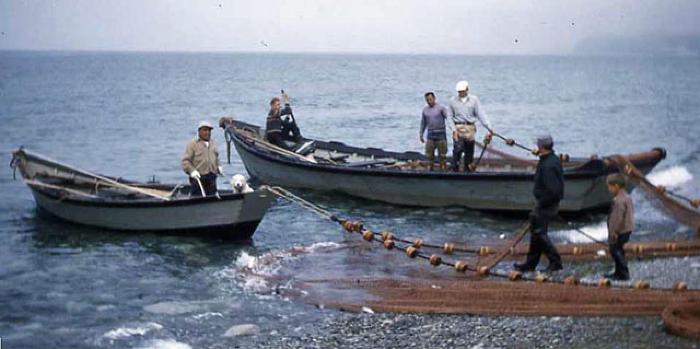Skiff — Skiifaq, Skiiguaq, TauRaq (N), TuuRaq (S)

Before the availability of aluminum skiffs and powerful motors and winches, Alutiiq fishermen relied on wooden dories and their own physical strength to harvest salmon. Set netting, beach seining, and ocean seining were done with high-sided, flat-bottomed skiffs propelled by rowing. These skiffs appeared in the late nineteenth century, during the first years of the commercial fishing industry.
In places like Karluk, crews of fourteen men set and retrieved beach seines by hand until 1896. They anchored one end of a net to the beach and loaded the remaining net into a dory. Then, eight men paddled the boat while two others cast the seine. Men in two other dories worked to keep the lead and cork lines from tangling. When the set was complete, the entire crew worked by hand to haul in the catch. Only a couple of sets could be made each day because each set took from four to six hours.
Local canneries that equipped their workers owned many of the early dories. As the fishing industry developed, however, Kodiak craftsmen began to build and own wooden boats, including skiffs, dories, and purse seiners. After the Second World War, boat-building became a profitable winter industry, particularly in communities like Ouzinkie and Afognak village where timber was plentiful.
